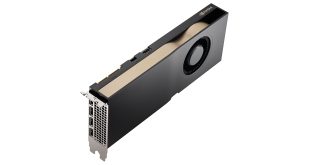If you’ve been sitting at home, researching GPGPU and wondering “What’s the best way for me to assemble a super computer with almost 2,000 CUDA cores, 24GB of memory and the ability to process close to 5 billion triangles a second?”, then Asus may have the answer for you.
Not content with the 3,886 awards it collected in 2011, Asus is launching even more product. Right now, the thrust is coming from the server and workstation team.
There seems to be 3 models in the new launch, all of which have G2 in the name – but we’re not sure why. Removing the G2, we get the following models:-
ESC1000: One way graphics workstation based on Intel’s E5-1600 processor
ESC2000: Two way workstation and GPU server with a pair of Intel Xeon E5-2600 chips
ESC4000: Hybrid HPC server that also comes armed with two E5-2600 processors
The main difference, when it comes to GPGPU configurations, is the number of PCI Express slots available with each model.
The 1000 model can handle up to 3 graphic cards, but the ESC 4000 is ready, willing and able to take on four nVidia Quadro 6000 cards – each of which has 448 CUDA cores, 6GB of GDDR5 and a thirst that can only be quenched by 225 watts of juice.
Speaking with Miodrag Relic, head of marketing for the Open Platform Business Group, we were told, “These super computer servers and workstations offer professional users high density hybrid computing power, delivering upgrades in graphics capabilities and expandability”.
Regarding specifications, Relic said, “With support for four graphics cards and up to two Intel Xeon E5-2600 processors, they enable greater performance, presenting better reliability with Intel Ethernet and power supply redundancy. Expansion slots comply with PCI Express 3.0 x16 specifications, and all power supplies adhere to 80 PLUS standards to ensure improved energy efficiency. Additional features such as hot-swap storage, ASUS PIKE, ASUS SSD Caching, and InfiniBand round off ideal platforms for high-demand computing”.
We didn’t ask about noise levels when dealing with a fully loaded system whose requirements would be close to 1,300 watts – but we guess no one questions the fact that a Ferrari makes noise when a wide boy guns it past 150mph.

KitGuru says: Around 10 years ago, almost no one outside Stanford was talking about GPGPU and the need for more Hybrid Computing Power. Now we have companies like Asus launching ranges of systems for just that purpose. Wonder what technology is considered rare/unusual today, but which will form part of a standard launch in 2022?
Comment below or in the KitGuru forums
 KitGuru KitGuru.net – Tech News | Hardware News | Hardware Reviews | IOS | Mobile | Gaming | Graphics Cards
KitGuru KitGuru.net – Tech News | Hardware News | Hardware Reviews | IOS | Mobile | Gaming | Graphics Cards


